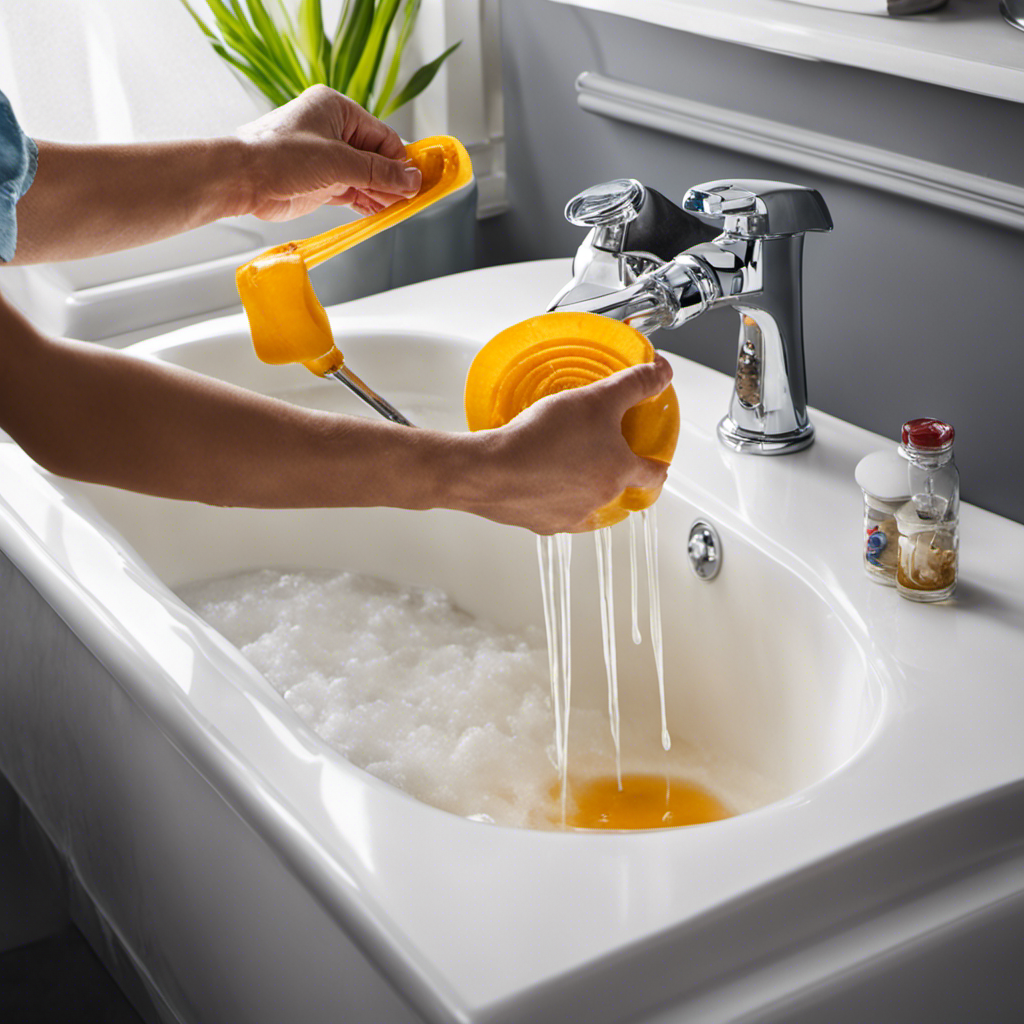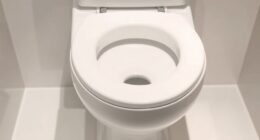Ever pondered whether we can take control and flush a toilet ourselves? Search no more!
In this article, we will delve into the inner workings of toilets, identify common causes of flush failure, and provide you with a step-by-step guide to manually flushing a toilet.
So, get ready to become the master of your porcelain throne as we explore this fascinating topic!
Key Takeaways
- The flushing mechanism of a toilet involves lifting a rubber flapper, allowing water to rush into the bowl and create a strong flow to push waste down the drain.
- Common causes of toilet flush failure include a clogged drain and a faulty flapper, which can be resolved through DIY repairs such as using a plunger or replacing the flapper.
- Regular maintenance and troubleshooting are crucial for preventing future flush issues, including checking for visible signs of damage or wear, inspecting valves for leaks or malfunctions, and addressing any issues promptly.
- Manual flushing methods and tools include using a bucket of water, a toilet-specific plunger, or a toilet auger. Proper toilet maintenance, regular inspections, and avoiding flushing items that cause clogs are also important for preventing common flush issues.
Understanding the Flushing Mechanism
To understand the flushing mechanism of a toilet, we need to look into how water enters and exits the bowl. When the toilet handle is pressed, it lifts a rubber flapper inside the tank, allowing water to rush into the bowl through the flush valve. This sudden influx of water creates a strong flow that pushes waste down the drain and out of the toilet.
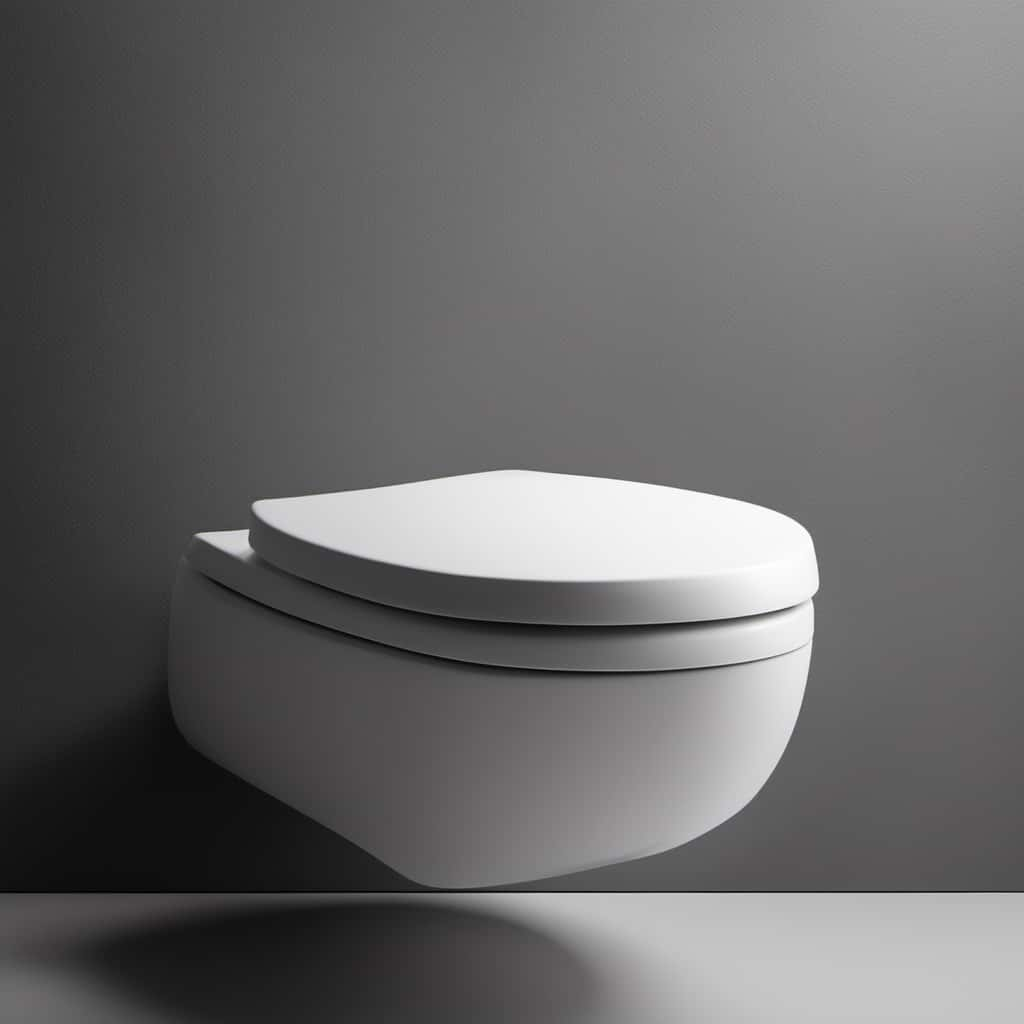
Once the flushing process is complete, the flapper closes, sealing the tank and allowing it to refill with water. However, there are common toilet flushing problems that can arise, such as weak flushes or incomplete flushing. These issues can often be resolved through DIY toilet repairs, such as adjusting the water level or replacing the flapper.
Understanding the flushing mechanism is crucial for troubleshooting and addressing these problems effectively.
Identifying Common Causes of Toilet Flush Failure
We often encounter toilet flush failures caused by common plumbing issues. Identifying the cause of a toilet flush failure is essential for successful toilet flush repair. Here are two common causes to consider when troubleshooting a toilet flush:
- Clogged Drain: A clogged drain is a frequent culprit of toilet flush failure. Debris, such as toilet paper or foreign objects, can obstruct the drain and prevent proper flushing. Clearing the clog using a plunger or a drain snake can often resolve the issue.
- Faulty Flapper: The flapper is the rubber seal that controls the release of water from the tank into the bowl during a flush. If the flapper is worn out or damaged, it can cause incomplete or weak flushing. Replacing the flapper with a new one can solve the problem.
Tools and Materials Needed for Manual Flushing
As we delve into the topic of manual flushing, let’s explore the necessary tools and materials to successfully address toilet flush issues. When it comes to manual flushing, there are a few alternatives to consider, each with their own benefits. These alternatives include using a bucket of water, a plunger, or a toilet auger.
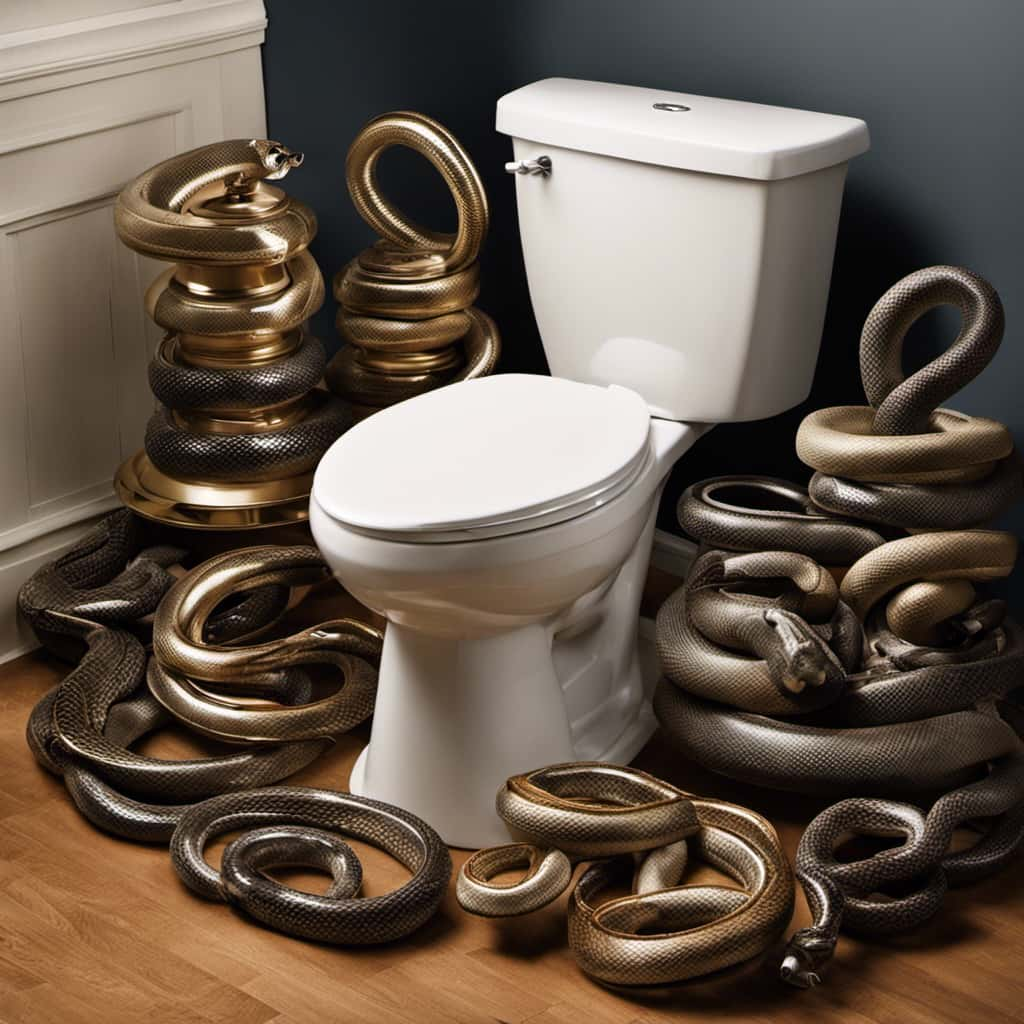
Here’s a table outlining the tools and materials needed for each alternative:
| Alternative | Tools | Materials |
|---|---|---|
| Bucket of water | Bucket | Water |
| Plunger | Plunger | N/A |
| Toilet auger | Toilet auger | N/A |
Using a bucket of water as a manual flushing alternative can be effective in situations where the toilet’s tank is not filling with water. Simply fill a bucket with water and pour it into the toilet bowl forcefully. This should create enough pressure to flush the waste down the drain.
A plunger is another useful tool for manual flushing. Make sure to choose a plunger specifically designed for toilets, as it has a flange that creates a better seal. To use the plunger, place it over the drain hole and push and pull vigorously to create suction and dislodge any clogs.
Lastly, a toilet auger can be used for more stubborn clogs. This long, flexible tool is inserted into the toilet drain and can break up or remove blockages that a plunger may not be able to handle.

Step-By-Step Guide to Manually Flushing a Toilet
To successfully manually flush a toilet, we’ll need a specific set of instructions to follow. Here is a step-by-step guide that will help you properly flush your toilet manually:
- Start by locating the water shut-off valve, usually found behind the toilet or near the water supply line.
- Turn the shut-off valve clockwise to shut off the water supply to the toilet.
- Lift the toilet lid and locate the flapper valve at the bottom of the tank.
- Lift the flapper valve using your hand or a tool, allowing water to flow into the bowl and initiate the flush.
- Once the bowl is emptied, release the flapper valve to stop the water flow.
- Turn the water shut-off valve counterclockwise to restore the water supply to the toilet.
Proper toilet maintenance and regular plumbing inspections are essential to prevent flush issues. By following these steps and ensuring your toilet is well-maintained, you can avoid future problems.
Now, let’s move on to the next section, where we’ll discuss tips for troubleshooting and preventing future flush issues.
Tips for Troubleshooting and Preventing Future Flush Issues
To prevent future flush issues, regular maintenance and troubleshooting are key. Proper toilet maintenance can help prevent clogs, leaks, and other common problems. Here are some troubleshooting techniques to keep your toilet in optimal condition.
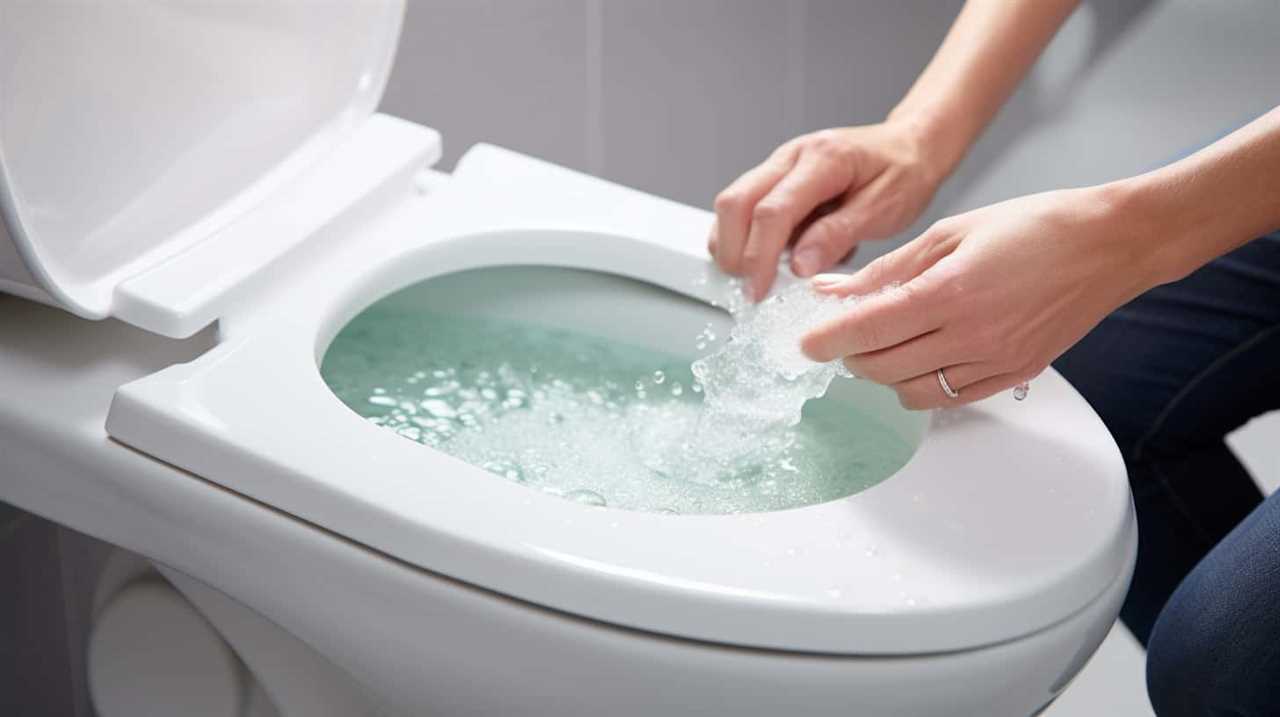
First, check the tank and bowl for any visible signs of damage or wear. Inspect the flapper valve, fill valve, and flush valve for any leaks or malfunctions. A leaking flapper valve, for example, can cause a weak flush or constant running water.
Next, ensure that the water level in the tank is set correctly. Adjust the float or fill valve if necessary to achieve the recommended water level.
Regularly clean the toilet bowl and jet holes to prevent the buildup of mineral deposits, which can hinder flushing performance.
Lastly, avoid flushing items that can cause clogs, such as excessive toilet paper or sanitary products.
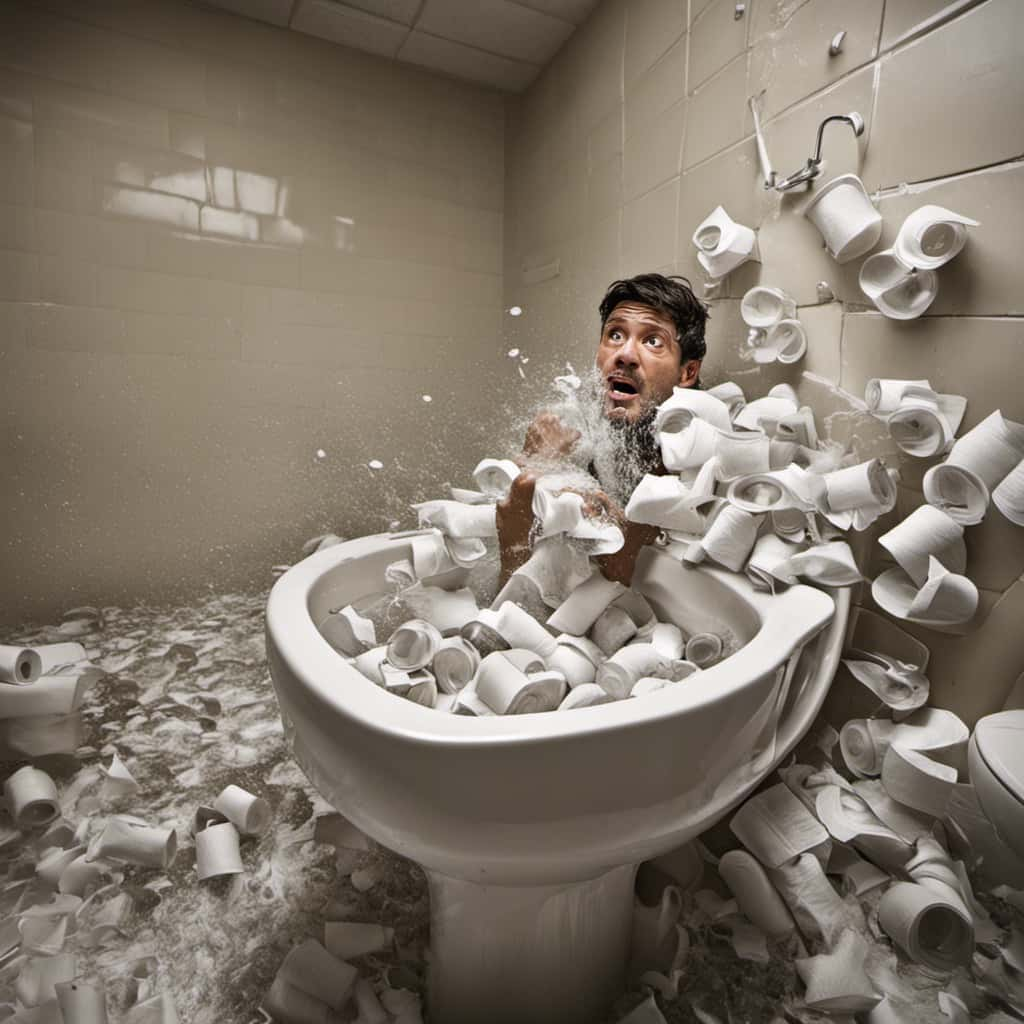
Frequently Asked Questions
How Do I Know if My Toilet Needs to Be Manually Flushed?
To determine if a toilet needs manual flushing, look for signs of a clogged toilet, such as slow or incomplete flushes. Troubleshooting toilet flushing issues can help identify the need for manual intervention.
Can I Manually Flush a Toilet Without Any Tools?
Yes, we can manually flush a toilet without any tools. By lifting the tank lid and pulling the chain or pressing the lever, we can troubleshoot toilet issues and perform basic toilet maintenance.
What Are Some Signs That the Flushing Mechanism of a Toilet Is Not Working Properly?
Common toilet flushing issues include weak flush, clogs, and constant running water. Troubleshooting tips include checking the water level, adjusting the flapper, and clearing any obstructions. These issues may require professional intervention if they persist.
Are There Any Safety Precautions I Should Take When Manually Flushing a Toilet?
Yes, you can manually flush a toilet. To do so, locate the water valve, turn it clockwise to shut off the water flow, then lift the flapper or push the flush button. Always exercise caution when attempting DIY toilet repairs.
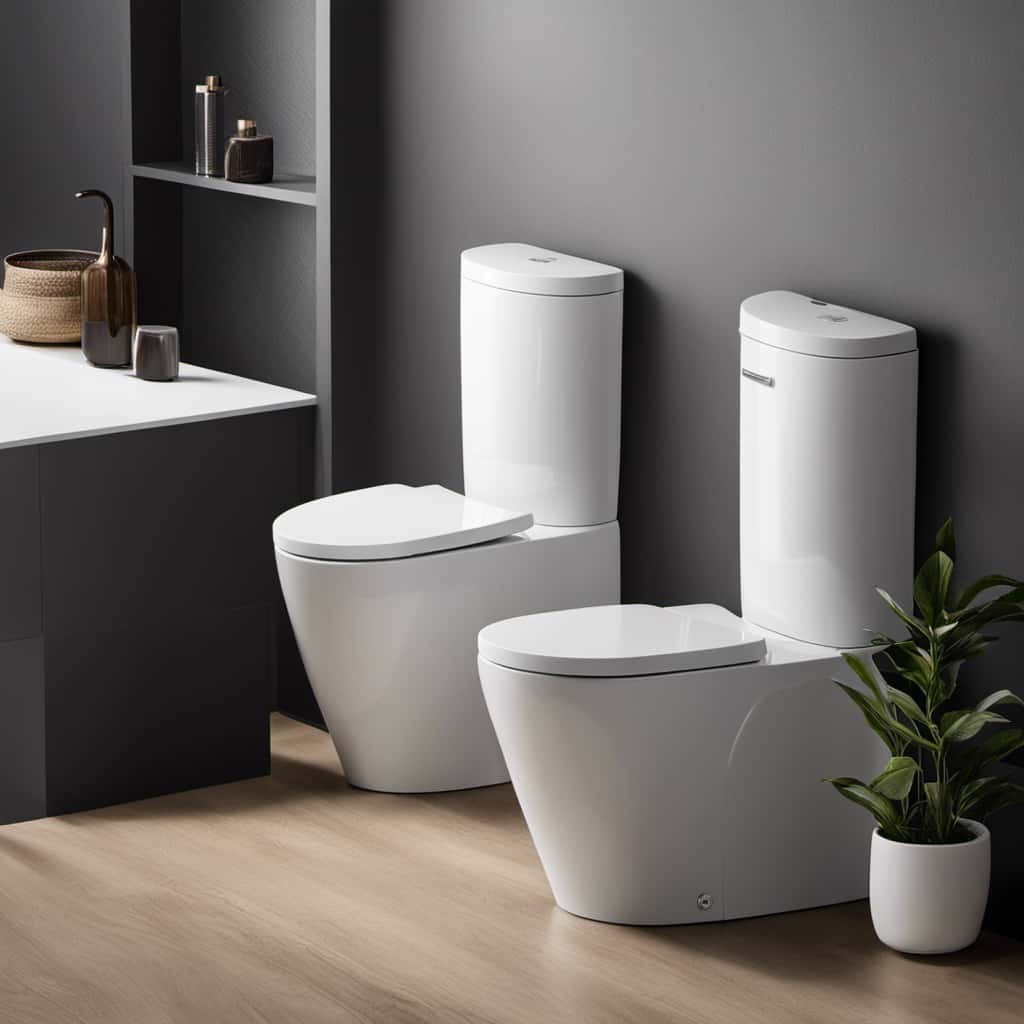
Can Manually Flushing a Toilet Cause Any Damage to the Plumbing System?
Manually flushing a toilet without proper knowledge can potentially cause damage to the plumbing system. To troubleshoot common issues with the flushing mechanism, ensure the flapper is functioning properly and check for any clogs in the pipes.
Conclusion
In conclusion, while it may seem unusual, manually flushing a toilet is indeed possible and can be a simple solution to common flush failures.
By understanding the flushing mechanism, identifying common causes, and following a step-by-step guide, anyone can successfully perform a manual flush.
So the next time your toilet refuses to flush, don’t panic. With a little knowledge and effort, you can easily fix the issue and ensure a smoothly functioning toilet.







